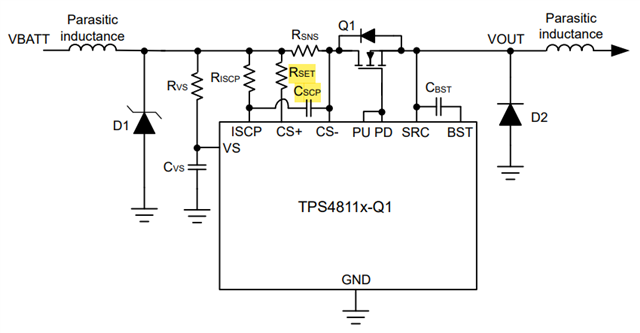Other Parts Discussed in Thread: BQ76952, TPS4811-Q1
Tool/software:
Hi Team,
I am looking for a gate driver similar to TPS4813 with Vgs protection and current sensing. One criteria being that the current sensing is similar to that of BQ76952, where in the value of the shunt is written into the gate drivers register, the adc conversion part is taken care by the gate driver and then it sends the current value to the microcontroller. Could you please suggest some gate drivers that meet the requirement ?
Thanks,
Karthik.



